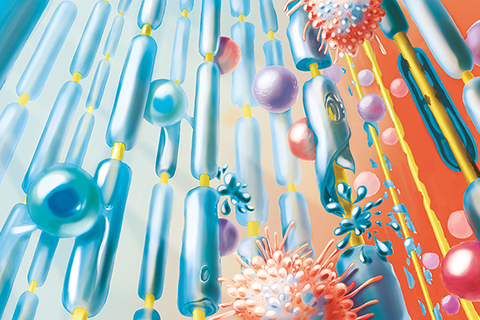When Cheryl Heeyeon Song was growing up in Korea, she wasn’t sure what career path to follow. She had both a knack for art and an interest in the sciences: right-and-left-brain loves. “I wanted to translate science into art, to be a storyteller for a living,” she says.
The Biomedical Communications graduate program in medical illustration at U of T Mississauga has helped Song combine her two passions. The program encourages students to master a range of techniques – drawing, interactive technologies, animation, simulation – to help communicate complex ideas. Song’s master’s thesis project, for example, is an information website for esophageal cancer patients, and her portfolio includes a colourful rendition of Multiple Sclerosis attacking the myelin sheaths on nerve cells (shown above).
Program director Professor Nicholas Woolridge says the degree is seeing a growing number of applications. Thanks to both UTM’s graduate program – the only one in Canada – and a concentration of biotechnology firms, Toronto has become a major North American hub for medical illustration.
The field is rapidly expanding partly because technical images are no longer just for medical professionals. Song sees great opportunity in increasingly interactive educational materials, such as animated textbooks and specialized apps, for both students and patients alike. “When you give someone a picture, you can inspire them to learn more.”
View Cheryl Heeyeon Song’s portfolio here.







No Responses to “ Visual Aide ”
Awesome work, Cheryl, bravo!